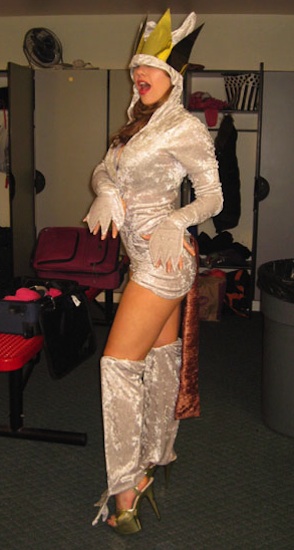Strippers
The Week in Links: March 11
The Rev Lia Scholl tells ministers how to relate to sex workers while reporter Nicole Greenfield examines the problems with the gospel of “Hookers for Jesus.”
On Charlie Sheen’s partners: “A woman’s active embrace of the fame monster or participation in the sex industry, we seem to say, means that she compromises her right not to be assaulted, let alone humiliated, insulted or degraded.”
Ottawa’s government lawyers will argue that prostitutes choose a risky life and therefore don’t deserve state protection. But tell us how you really feel, assholes.
There’s a new book on the British man who murdered three prostitutes.
Kansas looks poised to ban lapdancing while Oregon keeps working to pass anti-strip club bills.
A St. Louis high school teacher has been fired because of her past in porn and in England, a nurse was fired for her former work as an escort (which is legal) after prostituting while on sick leave.
NYC’s Naked Cowboy tried to sue a (now former) stripper.
This Week in Pole Dance and Popular Culture
Enrique Iglesias’ “Dirty Dancer” premiered Wednesday with what I think is the best actual pole dancing (and floor work) I’ve seen in a music video. I don’t think the athletes in the video are what any of us would refer to as “dirty dancers.” The futuristic strip club reminds me of a defunct Portland club that opened in the former space of a super-mod sushi restaurant called Electrofish Lounge. They kept all the furniture and decor and added a pole, and it looked a lot like this except for the surveillance camera hawks. Charlotte wants to know why Enrique is dressed like Justin Bieber.
Taking a cue from Nicki Minaj, Britney Spears pulled a male audience member on stage during her performance at Staples Center in LA on Monday night. He looks a lot more comfortable than Steve Nash, no? While one, let alone two feather boas is a total no-no (they shed everywhere and sweat plus feathers is a bummer), it’s pretty accurate. The jumping on the pole and straddling the guy from behind is a classic bachelor/birthday stage dance move.
America’s Got Talent featured an androgynous self-proclaimed “pole-fessional” who made it past the first round using two spinning poles and dancing to Katy Perry. Catherine says, “Gotta love a man in stripper heels and body glitter!” I kinda don’t think the black Mary Janes go with the silver though.
Romance & Relationships: A Stripper’s Love Story
 As I’m writhing under the crimson-lit, leather furnished room, his eyes never leave my face. Although my glance is cast downward, I know that he is smiling and I sense his contentment. I don’t bother to hide my smirk, as I lower my lips to his neck, and deliberately graze them across the wiry brush of his beard. My knees are at either side of his waist, and I wind my waist around until I press against the bulge in his pants. He exhales against my cheek.
As I’m writhing under the crimson-lit, leather furnished room, his eyes never leave my face. Although my glance is cast downward, I know that he is smiling and I sense his contentment. I don’t bother to hide my smirk, as I lower my lips to his neck, and deliberately graze them across the wiry brush of his beard. My knees are at either side of his waist, and I wind my waist around until I press against the bulge in his pants. He exhales against my cheek.
The last week when he visited, I giggled quietly to myself as he fucked me from behind, out of sight and sound of the other customers, staff and my coworkers. Tonight we are in the smaller, more visible private-dance room. The gauze-like curtain does little to hide our activities tonight, and so I will maintain my professionalism. Peripherally, I can see a bachelor party gawking from the couches adjacent to us.
The thumping rhythm comes to an end, and with the sound of DJ Robert’s voice, I loudly sigh and plop back in to the chair. My husband closes his eyes, and takes a breath, before reaching for his beer.
“Well, thank you Penguin,” he says to me, as he reaches in to his pocket and passes money to my outstretched hands. I daintily take it, and tuck it into my waist cincher as I bend to kiss him on the cheek. He knows the drill. Apparently he is also aware of the couch-gawkers. The bills are singles rather than twenties, but it is of no matter; I’ll surely just use them to buy us coffee in the morning.
I stand to give him a hug, as I do most of my well-paying customers. I step from the room, smiling, keeping my gaze level with the crowd, and hold the curtain open for him. My beautiful, bearded man returns to the bar, and I head to the bachelor couch.
Smiling bigger than I mean to, I greet them. “Well, hello, gentlemen. I couldn’t help but notice you watching. So…who’s next?”
